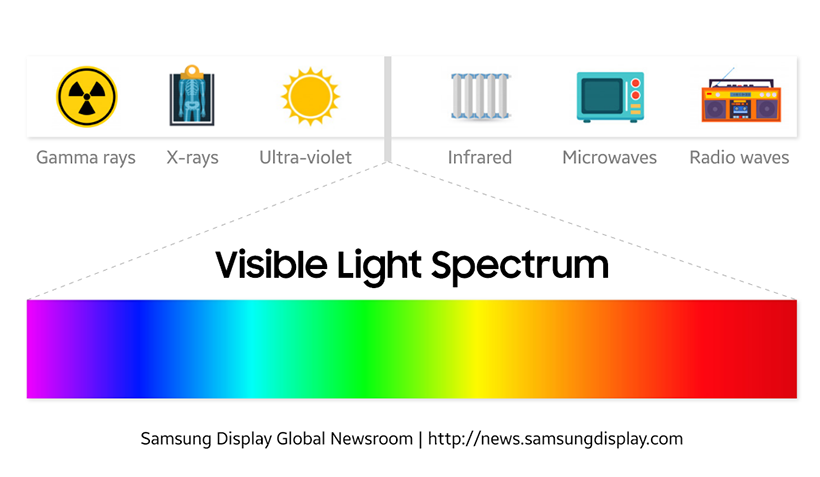There are endless use cases for Quantum Dot (QD) - a nanoscale* particle of semiconducting material. This is because depending on the size, even quantum dots made of the same material can have different electrical and optical properties such as luminous color. TV, monitor, and other display industries are the key market players utilizing QD technology today. Implementation of full lifelike color is a highly sought-after display industry, and Quantum Dots are considered to be the upcoming next-generation material that will help realize that vision.
Lifelike image quality is the most exciting prospect of QD display technology, especially its color performance. In color reproduction, displays produce millions of colors using only three primary colors (red, green, blue). For example, red and green together create yellow, and all three colors (also known as RGB) produce white.

Therefore, emission of the three primary colors is a major factor that determines picture quality. The three primary colors, which are original materials that reproduce colors, must be accurately portrayed in order to ensure vibrant colors on display.
Unfortunately, the three primary colors currently produced by displays generally offer lower quality than expected. Moreover, even the three lights produced are not “three” but rather an amalgamation of similar colors. The red light on display is not actually “red” or “just red”.
Richness of Three Primary Colors in Quantum Dot Displays
If we perceive color of light in the perspective of wavelengths, the concept becomes clearer: Every color we see is a visible light that has 380-700 nm wavelength, and each color of light depends on its wavelength. “The International Commission on Illumination (CIE) 1931 RGB color space describes colors across most of the human color perception range in terms of three monochromatic primaries at standardized wavelengths of 435.8 nm (violet), 546.1 nm (green) and 700 nm (red)” and continues to be the standard of color mixing theory (LEDs Magazine).
However, current display technology is unable to produce these wavelengths and it will continue to be difficult to achieve in the future. That is why a new set of specifications called ITU-R Recommendation BT.2020 was placed to be recommended as standards for displays. The Rec. 2020 (also known as BT.2020) sets the standard of primary colors - wavelength for red is 630 nm, 532 nm for green, and 467 nm for blue (EBU). Further research and development is in place to fully achieve this new color standard.

QD Display that enables Full-Color
There is a realistic discrepancy between the visible light that humans can see and the color gamut displayed on devices. In fact, “No current consumer video displays can provide full coverage of BT.2020, a color space that was designed to allow headroom for future technology developments (Sound & Vision).” The only known technology capable of achieving BT.2020 standards is Quantum Dot Display.
As mentioned earlier, another issue with producing primary colors on displays is the fact that multiple colors are emitted instead of pure emission of red, green, and blue light. When displays produce red light of wavelength 630 nm, colors of similar wavelengths are also observed at the same time.

Existing issues with producing primary colors are not unique to Quantum Dot Displays: They were also part of the struggles with past mainstream displays such as CRT’s phosphors, LCD’s color filter, and OLED’s organic material. Quantum Dot displays today face the same challenge, but there is a clear difference: Quantum Dot displays can produce primary colors closest to the industry standard, and they can significantly reduce the mixing of light with different wavelengths. This can be credited to the fact that Quantum Dots, which are self-luminescent materials, are very small materials in which a small number of atoms are collected.
*nanometer: a unit of length in the metric system equal to one billionth of a meter

